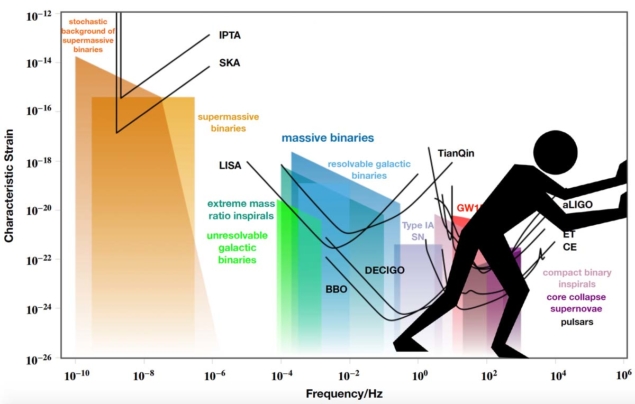
Seven years after the direct detection of gravitational waves (GWs), particle physicists around the world are preparing for the next milestone in GW astronomy: the search for a cosmological stochastic GW background. Current and planned GW observatories roughly cover 12 orders of magnitude from the nanohertz to kilohertz regimes, in which astrophysical models predict sizable GW signals from the merging of compact objects such as black-hole and neutron-star mergers, as observed by the LIGO/Virgo collaborations. It is also expected that the universe contains a randomly distributed GW background, which is yet to be detected. This could be the result of various known and unknown astrophysical signals, which are too weak to be resolved individually, or could be due to hypothetical processes in the very early Universe, such as phase transitions at high temperatures. The most promising region to search for the latter is arguably the ultra-high frequency (UHF) regime encompassing megahertz and gigahertz GWs, which is beyond the reach of current detectors. The detection of such a stochastic GW background could therefore offer a powerful probe of the early universe and of physics beyond the Standard Model.
On 12-15 October a virtual workshop hosted by CERN explored theoretical models and detector concepts targeting the UHF GW regime. Following an initial meeting at ICTP Trieste in 2019 and the publication of a Living Review on UHF GWs, the goal of the workshop was to bring together theorists and experimentalists to discuss feasibility studies and prototypes of existing detector concepts as well as to review more recent proposals.
The wide range of detector concepts discussed demonstrates the rapid evolution of this field and shows the difficulty in choosing the optimal strategy. Tailoring “light shining through wall” experiments for GWs is one promising approach. In the presence of a static magnetic field, general relativity in conjunction with electrodynamics allows GWs to generate electromagnetic radiation at the same frequency, similar to the conversion of the hypothetical axion into photons. In this case, the bounds placed on “axion to photon” couplings, for example as determined by the CAST and OSQAR experiments at CERN or the ALPS experiments at DESY, can be recast as GW bounds.
The sheer variety of systems offers a new playground for creative ideas and underlines the cross-disciplinary nature of this field
Another approach, echoing that of the very first GW searches in the late 1960s, is to detect the mechanical deformation induced by GWs at the base of resonant-bar detectors, which can be implemented in the UHF regime using centimetre-sized bulk acoustic wave devices common in radio-frequency engineering. Resonant microwave cavities are another approach to detect interactions between GWs and electromagnetism, and have been explored in the past, such as by the MAGO collaboration at CERN (2004-2007) or proposed as a modified version of the ADMX experiment at the University of Washington. Further proposals include the precise measurement of optically levitated nanoparticles, transitions in Bose Einstein condensates, mesoscopic quantum systems, cosmological detectors and magnon systems. The sheer variety of systems, the majority of which are much smaller and less costly than long-baseline interferometric detectors, offers a new playground for creative ideas and underlines the cross-disciplinary nature of this field. Working groups set up during the workshop will investigate some of the most promising ideas in more detail within the next months.
Complementing the discussion about detector concepts, theorists presented BSM models that predict violent processes in the early universe, which could source strong GW signals. These arise e.g. in some models of cosmic inflation, at the transition phase between cosmic inflation and the radiation dominated universe, or from spontaneous symmetry breaking processes. Since these processes occur isotropically everywhere in the Universe, the expected signal is a diffuse gravitational wave background. Moreover, some relics of these processes, such as topological defects and primordial black holes, may have survived until the late universe and may still be actively emitting gravitational waves.
The current sensitivity of all proposed and existing detector concepts is several orders of magnitude away from the expected cosmological GW signals. Given that the first laser-interferometer GW detectors built in the 1970s were eight orders of magnitude below the sensitivity of the currently operating LIGO/Virgo/KAGRA observatories, however, there is every reason to think that the search for UHF GWs is the beginning and not the end of a story.







